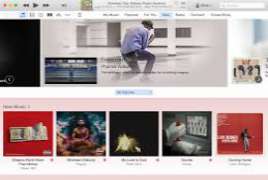
Managing music and other media for free iTunes is a free 64-bit multimedia software that allows you to control your Apple devices. Developed by Apple and first released in 2001, the app originally started as an audio player app and music library, hosting the official iTunes StoreApple digital media online store for MacOS and Windows operating systems. The program soon expanded into other categories, such as video, podcasts, ebooks and mobile applications.
An apple player
ITunes is best known as Apple’s official multimedia application. This is available by default on Apple devices. However, you must install this program to access the media files. Browsing the folders on your device will no longer display images. Any changes you want to make, such as importing or deleting files and changing metadata, always require this program for Apple’s safety.
(function () {(‘overview-application-page-desktop’);}); First, use iTunes to manage your device’s music. The program allows audio files from external files, such as your own ripped songs or downloaded files from the web, although supported formats are limited. Their metadata depends on which printers are written for your file, so you’ll need to have them manually changed. You can even upload album covers with any image for your files. However, songs and audio tracks can also be purchased directly from the iTunes Store. Like other online stores, the iTunes Store allows you to browse and download copies once you buy them. Files are automatically handled in your iTunes library. You can then sync them with your device for removal. From creating playlists to customizing audio information, this program has been a great music app for music only, but iTunes wasn’t just a music store. Thanks to its features as a mobile device management tool, the program also became a way to manage other media. Eventually, it took videos like movies and TV shows, podcasts or radio shows, digital documents like ebooks, and even mobile apps for your touchscreen gadgets. As with music, you can access these categories, so iTunes acts as your only external device manager. Sometimes it can be difficult to manage, especially if you need to connect to a computer to update or import new files. Unlike an easy way to open folders to view it all, this software automatically syncs to your new backup tool. While this is certainly practical, it can hurt you; Another thing is, as I said, you can’t access your files if you only open a folder on your device. To do this, you need iTunes, even for import only, and the library does not allow you to copy your items for external use. Fortunately, you can only visit your own iTunes folder to view the original files. In later versions, the size of the malicious software was so frustrating that iTunes components in MacOS Catalina were split to keep the focus separate. ITunes is generally a 64-bit multimedia library convenient for a variety of uses. Whether you use it for music or stuffothers, it has enough features to help you easily manage your device. The user interface itself is simple, so you don’t need more detailed information. However, the software has problems for people using fast file management. However, it is still one of Apple’s official applications.
